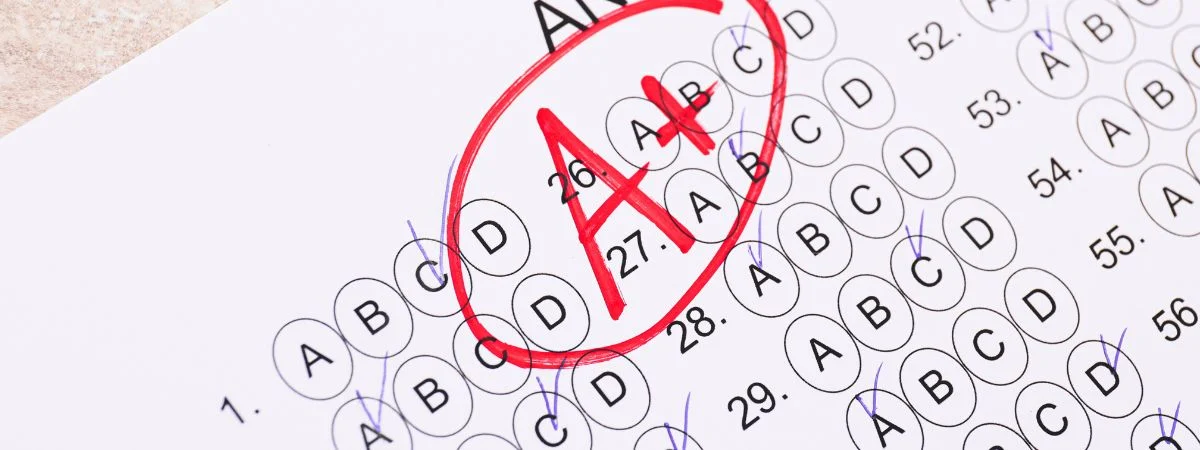The Common University Entrance Test (CUET) is a crucial examination for students aspiring to enter prestigious universities across India. With lakhs of students taking the CUET, calculating the CUET percentile and understanding the normalized score are essential steps in determining how a student performed relative to their peers. This article provides a detailed breakdown of how to calculate the CUET percentile and normalized score accurately, ensuring that students are well-informed about the process.
What is CUET Percentile?
The CUET percentile is a representation of a student’s performance in comparison to other test-takers. It indicates the percentage of candidates who scored lower than the student in the examination. The formula for calculating the percentile score is as follows:
Percentile Score = (Number of candidates who scored less than you) / Total Number of candidates Who Appeared x 100
The percentile score is a way to normalize the competition across a wide range of students. The key takeaway here is that even if two students score the same marks, their percentile can differ based on the performance of others in the same test session.

How is the CUET Percentile Score Calculated?
To understand the CUET percentile, let’s break down the calculation process:
- Rank-Based Approach: The first step involves ranking all the candidates based on their raw scores in the exam.
- Percentile Calculation: Once the rankings are assigned, the percentile score is calculated using the formula mentioned above. This means if a student is ranked at position 50 out of 1000 candidates, 950 candidates have scored lower than them. Therefore, their percentile would be:
950/1000 x 100 = 95th Percentile - Ties in Percentile: In cases where multiple candidates score the same marks, the same rank is given to all such candidates, but this can affect the overall percentile calculation.
It’s important to note that the CUET percentile does not reflect the actual marks but rather the relative performance compared to others in the same test.
What is a Normalized Score in CUET?
In addition to the percentile score, the CUET normalized score plays a significant role in evaluating the student’s performance across multiple sessions of the exam. Since CUET is conducted over several days with different question papers, the level of difficulty can vary between sessions. To ensure fairness and equality, a process called normalization is used.
Normalization ensures that students who appeared for a tougher session do not face any disadvantage compared to those who took an easier one. This is done by equating the scores across different shifts and bringing them to a common scale.
Why is Normalization Necessary?
The CUET exam is conducted in multiple shifts due to the high number of applicants. These shifts may have slight variations in difficulty levels. Therefore, to ensure that no student is unfairly advantaged or disadvantaged, the normalization process adjusts the raw marks. This is critical in creating a level playing field for all candidates.

How to Calculate the CUET Normalized Score?
The normalized score calculation uses a widely accepted statistical formula that takes into account the mean and standard deviation of each shift. Here’s a simplified version of how normalization is done:
- Identify the Mean and Standard Deviation: For each shift, the average marks (mean) and the standard deviation (a measure of how spread out the scores are) are calculated.
- Z-Score Calculation: A z-score is calculated for each candidate, which tells us how far their score is from the average score of that shift, in terms of standard deviations.
Z= (Candidate′s raw marks−Mean marks of the session) / Standard deviation of the session - Scaling to a Common Scale: The z-score is then converted into a normalized score by scaling it to a common reference, typically based on the overall performance across all sessions. The final normalized score can be represented as:
Normalized Score=Mean marks of all sessions+(Z Score× Standard deviation of all sessions)
This ensures that students from a tougher session can get a fair evaluation compared to those from an easier one.
Importance of Percentile and Normalized Score in CUET
Both the percentile score and normalized score are crucial for college admissions through CUET. Universities use these scores to rank students and decide cut-offs for various courses. Here’s why these scores matter:
- Fairness: The normalization process ensures that students from different shifts are treated equally, despite the varying levels of difficulty.
- Comparability: The percentile score helps in comparing candidates from different sessions, allowing universities to shortlist candidates based on their relative performance.
- Transparency: By using percentile and normalized scores, the entire process becomes more transparent and fair for all students.
Example Calculation of CUET Percentile and Normalized Score
Let’s go through an example to understand how to calculate both the percentile and normalized score.
CUET Percentile Example
- Total number of candidates who appeared: 50,000
- Candidate’s rank: 2,500
Percentile Score: (50,000−2,500)50,000×100=95th percentile
CUET Normalized Score Example
Let’s assume the following statistics for two shifts:
- Shift 1: Mean score = 65, Standard deviation = 10
- Shift 2: Mean score = 55, Standard deviation = 8
- Candidate’s raw score in Shift 2 = 70
Z-Score for Shift 2: Z=(70−55)8=1.875Z =
If we take the overall mean of all shifts as 60 and the overall standard deviation as 9:
Normalized Score: 60+(1.875×9)=60+16.875=76.87560
Thus, the candidate’s normalized score would be 76.875, adjusted for the difficulty level of their session.
Conclusion
Calculating the CUET percentile and understanding the normalized score are key elements for students who wish to interpret their CUET results accurately. Both these scores help in ensuring fairness and transparency in the evaluation process. By following the methods outlined in this article, students can gain a deeper understanding of their results and how they compare to their peers.


Start Your CUET 2026 & 12th Board Prep Now!